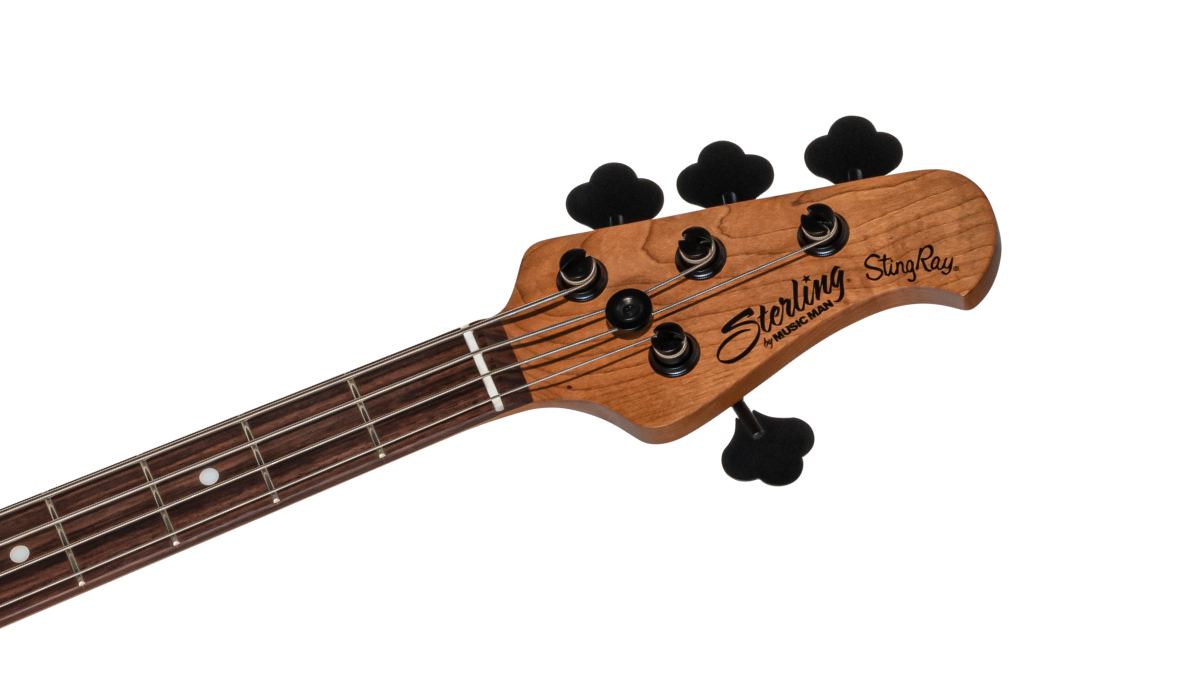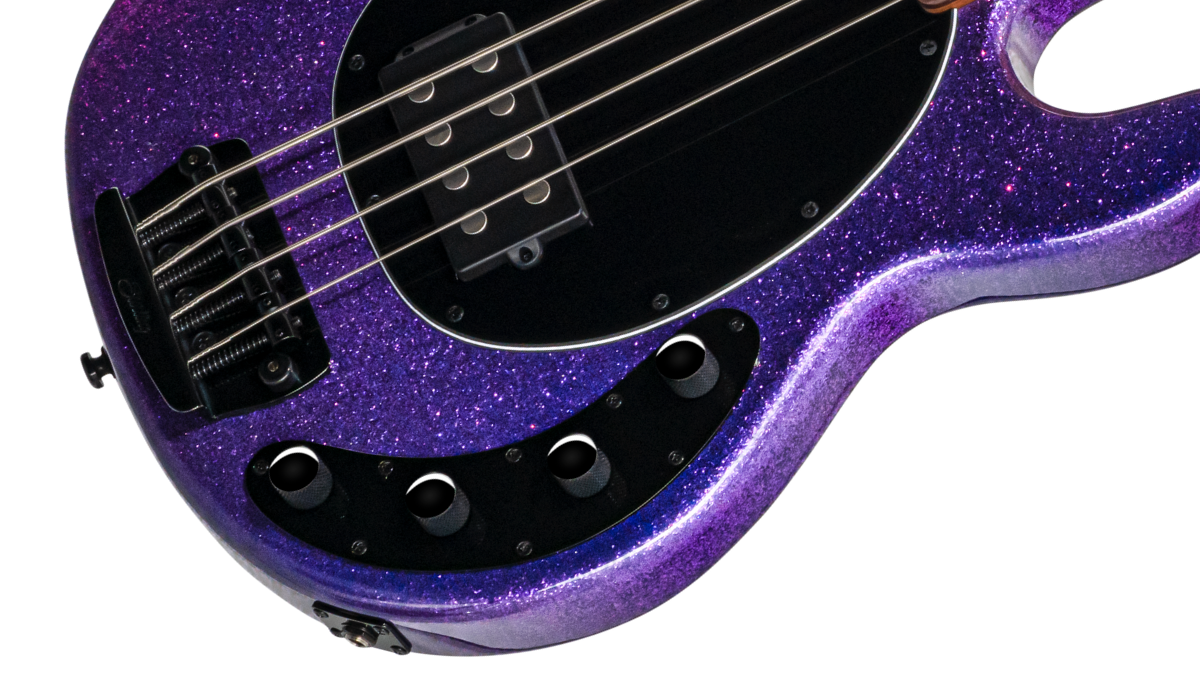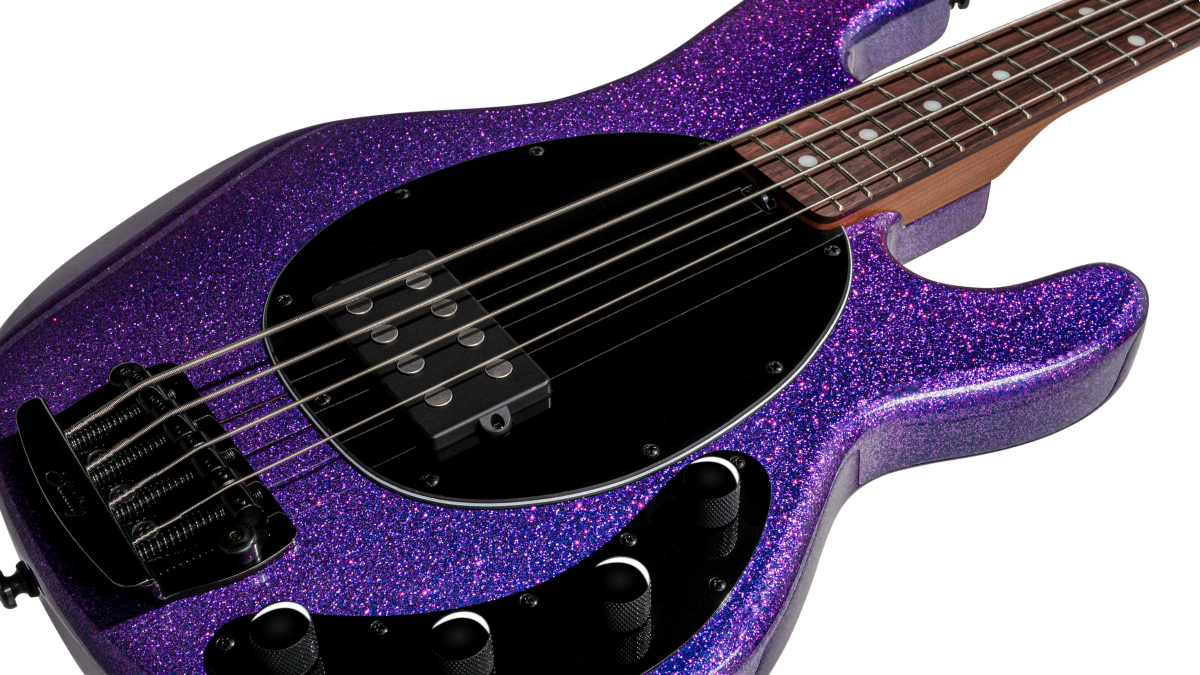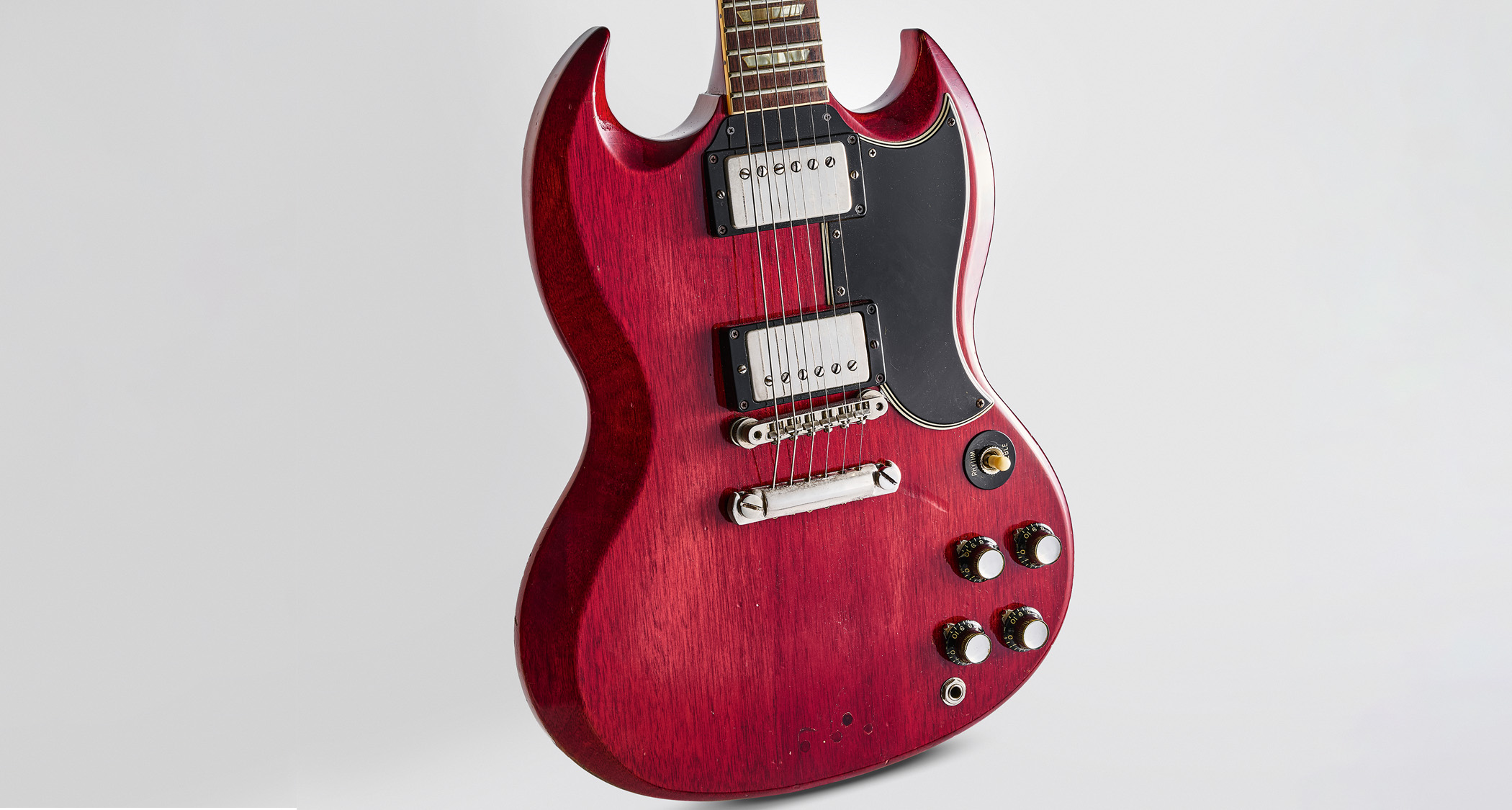Guitar World Verdict
A sophisticated piece of hardware made for the working pro but priced for the serious amateur enthusiast. With the Ray34 there's no downside.
Pros
- +
Great tone and sustain.
- +
EQ offers plenty of variation.
- +
Excellent build quality.
Cons
- -
None.
You can trust Guitar World
The Music Man people are at it again, offering a classic instrument that leans heavily on their tried-and-true heritage, but with a modern attitude. The Ray34 is based on the renowned Music Man StingRay. Well actually, it is a StingRay. Released in the mid ‘70s, the original StingRay Bass was an immediate hit because it had the low-end thump of Leo’s mighty P Bass, plus the upper-mid articulation that players and producers were after for the emerging funk and fusion styles.
For rock, funk and fusion, the StingRay had a richer bass that the P Bass and rounder midrange and treble than either the J Bass or the Rickenbacker 4001. Just as the Fender’s P Bass was a game changer upon its release in 1951, and again in 1957 with its slit humbucker, the StingRay made the bass sound suddenly high fidelity, with its large humbucker and clever active EQ.
And here we are, nearly 50 years later, with an instrument that is just as relevant today as it was in 1976.

The Sterling Ray34 is made in Indonesia from premium materials and to exacting specs. Like all Music Man instruments, it arrived for review faultlessly set up, and there was nothing for me to adjust to make it play better.
This particular Ray34 has a nyatoh body (other Ray34s have mahogany or swamp ash) and a maple neck. Nyatoh is an equatorial timber found from India to the Western Pacific islands and has the fine grain of mahogany combined with some of the broader grain of ash. The maple has been torrefied (roasted) to reduce the moisture content and make it more stable. Torrefication is a fairly recent process that is intended to “age” the timber, making it lighter and stiffer – as if it had been cut from the forest decades earlier.
Topped with a rosewood fretboard, the neck is a delight to play and the whole package is lighter than many basses, and well balanced too, whether seated or standing. The body is resonant and has clear fundamental notes when played unplugged.

Other details include a 3-band active tone circuit, an H-1 alnico humbucker, a StingRay bridge, Fender-style open-geared tuners, and a neck joint with six (yes: six!) bolts. Importantly, the body contours are a little more modern that an original StingRay, which is a good thing, and the neck shape and finish is very modern, which is a very good thing. The scale length is 34”, the fretboard radius is 9.5” and the nut is 1.69”.
All the latest guitar news, interviews, lessons, reviews, deals and more, direct to your inbox!
Plugging into a Mark Bass head wired to a Hartke 410 and a Hartke 115, the first thing I noticed was the bloom of the low frequencies. There’s that comforting focus of the fundamental note, but there’s a layer of harmonic richness that delivers softly just a split second later.
Compared to my P Bass, there’s a little less thud and much more boom: the fundamental doesn’t crack through harshly, and its tone is much richer with a delivery much smoother. There’s a level of confidence here that most basses don’t offer, and it’s very responsive to picking dynamics: play with fingers and it’s smooth and even, but dig in with a pick and it gives up an organic growl that punches the amp’s input stage without that annoying electronic bite (overload, not distortion).

Plugging into an old GT Electronics Studio Preamp connected to an even older EVTL-15, the Ray34 worked beautifully with the front end tube to create a rich but defined tone, reminiscent of the tight jazz combo sound of an Ampeg B-15R fliptop. In fact, through the smaller amp, the Ray34 delivers superb jazz tones. Wind down the mids and you have a woody, almost-upright sound, with plenty of tight articulation and without the whoosh accentuated by a larger, ported cab. The EVTL’s 6K top end gives everything a delightful snap that the Ray34 feeds perfectly.
The Sterling Ray34 is a fully equipped, ready-to-rock, professional instrument
Just for fun, I recorded the Ray34 direct into the desk using Logic Pro, on a friend’s track that needed a bass line. The next day, another friend dropped by and, listening to the isolated Ray34 lines, asked what compressor I was using. I said, “There’s no compressor involved.” He said, “So you used your GT preamp. You always use that.” I said, “There’s no preamp here. It’s direct.” That kinda says it all.
The Ray34 is a pleasure to play. The neck is super-comfy and slicks up well after just a few minutes. The body is not heavy and resonates nicely. Electronically, it’s pretty simple: volume and an active 3-band EQ. Set them all in the middle and you’ll get that classic ‘60s/’70s sound, then work from there for ‘80s and more contemporary tones. The hardware is first rate and made to last.
I don’t know what they did to make this a more down-market instrument. Usually, these companies will leave off a feature or two, so that there’s a reason to dig deeper into the pocket for the “real thing” or at least the next model. But the Sterling Ray34 is a fully equipped, ready-to-rock, professional instrument.
Specs
- PRICE: $879.99
- TYPE: 4-string solidbody bass guitar
- BODY: Nyatoh
- NECK: Roasted maple
- FINGERBOARD: Rosewood with white dot markers
- FRETS: 21, medium
- PICKUPS: H - 1 Alnico Humbucker
- CONTROLS: 3-band Active Preamp
- HARDWARE: Sterling by Music Man-Designed Bridge, Open Gea tuners
- CONTACT: Sterling by Music Man

